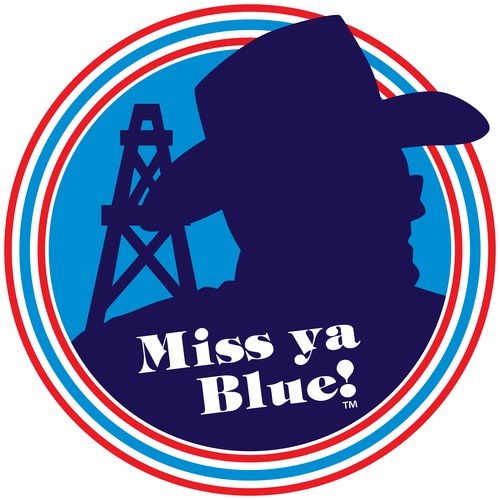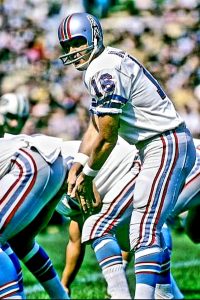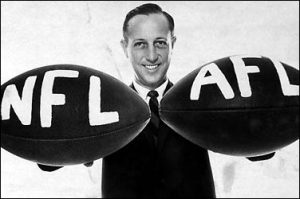Charlie Tolar: The Man of Many Nicknames

On the surface, one of Charlie Tolar’s dozens of nicknames, “Tank,” might seem ill-fitting.
Standing at a mere 5-foot-7 and weighing about 200 pounds throughout his career, he was often wrongly labeled as an elusive back by opponents.
“He wasn’t little,” recalled former Oilers guard Hogan Wharton.
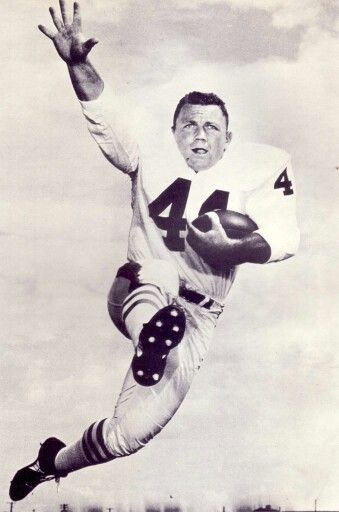
“He was just short. It was easy work blocking for him. He had amazing strength, and plenty of moves. He’d carry people six or seven yards.”
Tolar’s short frame allowed him to hide from and deceive defenders behind the line of scrimmage.
When he suddenly appeared in front of a defender, his low shoulder pad would meet their chinstrap with a thunderous boom.
“When I can’t see who’s got the ball,” said Boston Patriots defensive captain Tony Sardisco, “I figure they gave it to Charlie.”
Tolar came to the Oilers in 1960 from Northwestern (La.) State University in Natchitoches, La., which was also Tolar’s home town.
At NSU, he was named the Gulf State Conference MVP twice and still holds four school records.
Former Northwestern State coach Jack Clayton said Tolar was the best player he ever coached.
“He had great speed,” said Clayton, “and he was the hardest fellow to knock down I’ve ever seen.
“If we were behind by six points or less and had the ball with five or six minutes to play, we would just give it to him every time. They couldn’t stop him.”

Tolar was the last player cut by the Pittsburgh Steelers in their 1959 training camp.
A year later, Tolar’s college teammate Charlie Hennigan persuaded him to ride with him to the Oilers’ training camp.
Hennigan figured that the car would take them to Houston, but he thought that it might be a long shot to get them back.
On his way with Hennigan to camp, Tolar doubted their chances of landing on the Houston roster and said, “This is crazy. What would they want with a couple of misfits like us?”
However, Tolar was wrong.
He and Hennigan both made one positive impression after another on the other camp attendees and the Houston coaches. Both former NSU Demons made the first Oilers roster for the inaugural 1960 season.
When Oilers owner Bud Adams was asked about Tolar, he stated, ”The defensive players couldn’t see him about half the time because he ran so low to the ground.”
Bob Talamini, one of Tolar’s All-Star linemen, said, ”The only thing Charlie didn’t have was breakaway speed, but he’d run through a brick wall to get one yard. He was so tough.
“He played with the kind of injuries that kept other players on the sideline. Charlie would have it wrapped and shot up, and he’d be on the field.”
Nearly all of Tolar’s teammates’ faces would light up when they spoke of Tolar’s ability and power, and that popularity carried over to Oilers fans.
During his career, Tolar was consistently one of the most popular AFL players. Fans could be heard chanting “Tank! Tank!” as the Oilers inched closer and closer to the goal line.
Also known as “The Human Manhole Cover,” Tolar once blocked huge Los Angeles/San Diego Chargers defensive end Ernie Ladd (later also of pro wrestling fame as “The Big Cat”) and knocked him unconscious, forever winning the hearts of many as a successful David in a land of Goliaths.
In another bout with the 6-foot-9 Ladd, Tolar dove between Ladd’s legs for a first down. Ladd, who later became an Oiler the season after Tolar retired, shook his head in befuddlement as though he didn’t know whether to laugh or to cry.

Instances like this spoke to Tolar’s selfless, sacrificial playstyle. He was the ultimate team player, accomplishing any task he had set ahead of him, not necessarily with grace, but rather with a lowered shoulder pad.
Selected in the 27th round with the 319th overall pick in the 1959 draft, Tolar amassed a solid seven-year career spent entirely with the Oilers.
Tolar was named to the All-AFL team three straight times from 1960-62 and to the AFL All-Star team twice. He was also a two-time AFL champion and Oilers team MVP in 1962.
“The Human Bowling Ball” also holds the distinction as the first Oiler running back to top 1,000 yards, and he set an AFL record with 244 rushes in 14 games in 1962.
Tolar was named to the Oilers all-time Dream Team team 30 years after he retired and finished the AFL’s all-time top 10 for rushing yardage.
He was also named to the Louisiana Sports Hall of Fame in 1992.
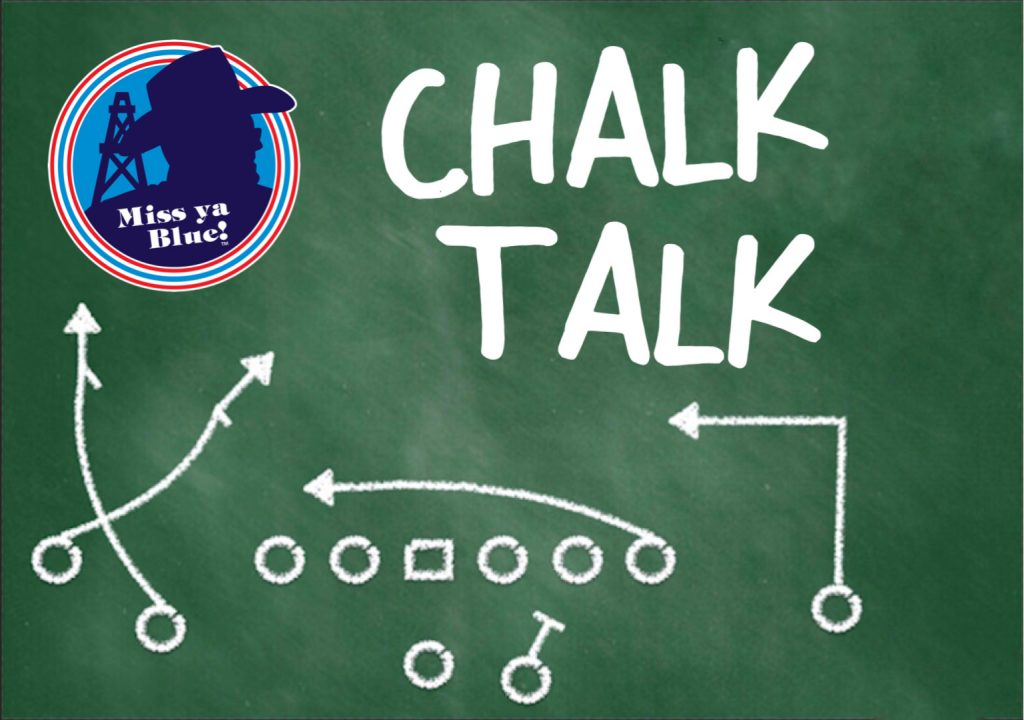
Tolar had the benefit of playing with two other good running backs in Billy Cannon and Dave Smith and behind arguably the best offensive line in the AFL.
The Oilers’ offensive scheme was run from the wishbone.
This multiple-look backfield greatly befuddled defenses, which could not scheme to stop just one running back.
The “Sucker” play contained two options for the quarterback to determine which back ran the ball.
Ultimately, the quarterback needed quick eyes and hands to make the appropriate read to determine which running back would take the handoff.
Tolar would line up in either of the two tailback positions and be utilized as either a blocker or a runner.
For this play to work, the guards and center blocking assignments were critical. They needed to quickly create and open holes to set up running lanes.
The pulling guard would utilize a backward bucket step, lengthening his step to open up his hips, and quickly attack down the line of scrimmage and block the defensive end or whomever else was in the 9-hole gap.
The center then needed to down-block and fill the hole left by the pulling guard.
The backside guard would have to think quickly to distinguish whether the defensive tackle was lined up in the 1 gap or the 3 gap.
Where the defender lined up determined how the backside guard would block.
If the defender was in a 1 technique (i.e., lined up shaded toward the center), the guard would down-block and push him away from the running lane. If the defender was in a 3 technique (i.e., lined up shaded away from the center), the guard would out-block the defensive tackle away from the running lane.
Plays like these solidified Tolar as a hard-nosed runner and helped him make his presence felt on the gridiron.
His power running style would often lead the Oilers’ net gain in yardage, whether for one, two, or 60.
Dillon Holloway is a native Mississippian currently residing in central Oklahoma. He is a rabid football fan and a historian of the sport. He is a husband, a military officer, volunteer teacher and football coach, and emerging guest speaker. He graduated from the University of Mississippi with a bachelor’s in English and a minor in aerospace studies. He played football from pee-wee through high school, winning the 2A Midsouth Association of Independent Schools (MAIS) state championship and was named first-team all-district guard in 2011. Since his first football practice, he has always made the sport a part of his life in some fashion, and writing for Miss Ya Blue! allows him to continue to do so.
